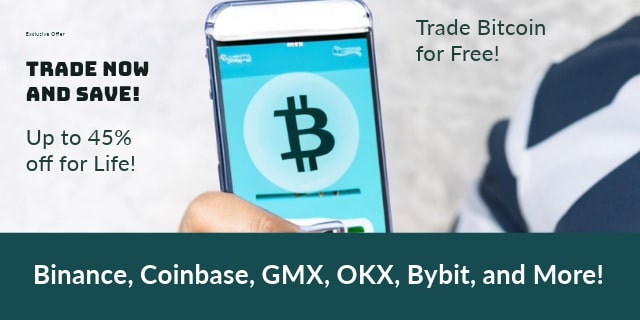Maker vs. Taker in Cryptocurrency
Understanding Maker-Taker Fees in Cryptocurrency Trading
Maker and taker fees are two different types of fees that you may be subject to on a cryptocurrency exchange. We explain maker fees vs. taker fees.[1]
Semantics: The term “maker” comes from the concept of a “market maker.” A market maker is one who provides liquidity to a market (they “make liquidity”). In our case, a maker is one who places limit orders on the order books. Without limit orders sitting on the books, the price of cryptocurrencies would swing around wildly as the exchange tried to match buy market orders and sell market orders. Thus market makers are rewarded with lower fees (in some markets) for providing liquidity to the market (in the form of buy / sell limit orders). On the flip side, “takers” take liquidity. That is, they place market orders to immediately buy / sell orders sitting on the books. For that, takers pay a higher fee than makers (in some markets). If you get that concept, that a maker makes liquidity and a taker takes liquidity, everything else should be easier to follow.
What are Maker Fees and Taker Fees
In cases where maker and taker fees apply [for example on GDAX]:
- When you place an order that is immediately filled in its entirety (for example a market or stop order) you are a “taker,” and you pay a “taker” fee for this. The idea is that you are “taking” the price you want, right now, generally by buying or selling limit orders sitting on the books.
- Meanwhile, when you place an order that doesn’t fill immediately (like a limit order), you are a “maker,” and you can expect to pay a reduced “maker” fee for this. As noted above, this terminology comes from the fact that placing limit orders on the books helps to “make the market,” (it makes you a “market maker”).

“Takers” usually pay a higher fee while “makers” pay a lower fee. This creates an incentive to place orders on the books (which people can then buy via market orders).
Thus, one always wants to be a “maker” if possible in a market that uses a maker/taker fee structure that rewards makers.
Due to this, in almost every situation it makes sense to set limit orders that won’t be placed immediately and wait to be matched with another buyer or seller’s market or stop order.
Not every exchange uses a maker-taker model, but popular ones like GDAX and Kraken do. Thus this is important to understand.
TIP: Limit orders aren’t inherently special; they are simply the only order type that doesn’t trigger an immediate buy or sell. A market order is immediate, and a stop order creates a market order when a specific price is reached. Meanwhile, a limit order can “sit on the order books” and won’t fill immediately, which is what you want when facing a maker-taker fee schedule.
NOTE: On some exchange [for example Bittrex] you can essentially preform a market order using a limit order (by placing it at a price that will fill immediately). GDAX doesn’t let you do this, so its a rather moot point. On GDAX, limit orders should always incur maker fees (0% fees) and market and stop order should always incur taker fees (unless you order is only partially filled; see below).
Why Do Cryptocurrency Exchanges Use a Maker-Taker Model?
Markets with lots of high-frequency trading can suffer from rapid trading that diminishes liquidity and distorts prices (which benefits short-term traders trying to make big profits quick and hurts long-term traders).[2]
Exchanges can charge maker-taker fees to offset undesirable behavior. They charge a premium for those who trade quickly. In other words, if you want to “take” right now, you pay for it.
Having limit orders in reserve helps to steady the price of coins.
That is the gist of maker-taker fees and why they are a thing, the rest of this page we’ll use Coinbase’s GDAX as a model to further explore these concepts.
Understanding Maker-Taker Fees Via GDAX
When your order isn’t filled immediately, for example if you placed a limit order, maker fees are charged. Meanwhile, taker fees are charged when an order is filled right away.
On exchanges where taker fees are higher, you should always aim to pay maker fees when you can.
Paying maker fees requires you to set limit orders. Limit orders help make the market and gives others something to take.
Maker: When you place an order which is not immediately matched by an existing order (for example, a limit order that takes a few hours or days to fill), that order is placed on the order book. Once that order sells or buys, that is once another customer places an order that matches yours, you are considered the maker. Your GDAX fee will be 0%.
Taker: When you place an order at the market price that gets filled immediately, you are considered a taker and will pay a fee (for GDAX that is 0.10% and 0.25% for BTC books and 0.10% and 0.30% for ETH books depending on your volume; the more you trade, the lower your fee is over time).
On partial fills: If an order is partially matched immediately, you pay a taker fee for that portion. The remainder of the order is placed on the order book and, when matched, is considered a maker order.
In summary, on exchanges that use a maker/taker model and charge lower fees for maker orders [for example GDAX]: if your order goes through immediately, you pay a fee. This is usually the case with a market order. If your order doesn’t go through right away, then you don’t pay a fee, this is usually the case with a limit order.